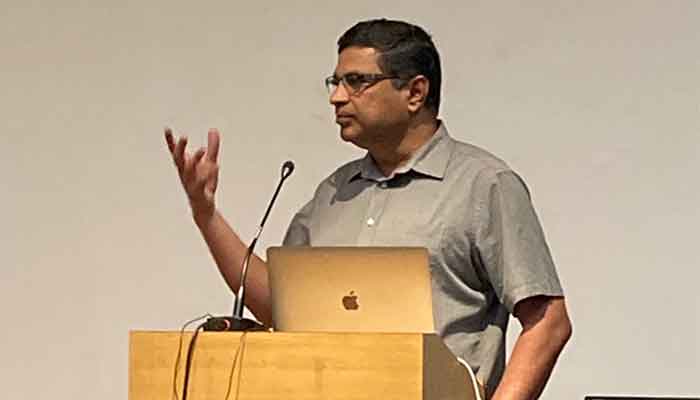Dr. Vamsi Vakulabharanam, co-director of the Asian Political Economy Program and an Associate Professor of economics at the University of Massachusetts, Amherst gave a HSRG weekly talk on Inequality in India since Independence – A Tale of Two Classes on 25 January.
Here is the summary of Dr. Vakulabharanam talk:
When one talks of inequalities in India, there is the implicit assumption that there is a nation-state to consider – this is not necessarily the case, as there are several region-based differences. Yet, there is a level of ‘abstraction’ that one can attempt to make and generalise about these inequalities. The analysis was based on MH Suryanarayana’s analysis of inequality trends between the 1950s and 1980s. Decile analysis is available for this period. Post-1983, detailed analysis was done using class analysis. As per Mahalanobis’ devised approach, consumption is usually a better estimate for inequalities than income, because the average Indian is more open to disclosing spendings than earnings. However, consumption will be more uniform across classes (the rich save money, and the poor use all of their income). Therefore, inequality numbers obtained are likely to be under-estimates. The analysis also ignores the presence of the top 0.1-1% of wealthy people. This is because information about them is harder to obtain. During colonial rule, India saw negative growth and increasing inequalities. After independence, the change in growth and inequalities can be divided into three periods. The period from 1947 to 1980 saw moderate to low growth, but (change in) inequalities was also moderate. Compared to before, inequalities were reduced. The period from 1961 to 1974 was the longest period of inequality decline in independent India. The period between 1970 and 1980 did not see inequality decline, but there was also significant growth at this time. China, in contrast, cut inequalities substantially during this time. From 1980 to 2010, we see rising inequalities, but correspondingly high growth too. 1983-84 to 1893-94 saw growth but stagnation in changes in inequalities. From 1993-94, till 2009-10, we see inequalities rise very fast. It was also noticeable that the rich states grew faster while the poor states grew slower. At the expense of the remaining 90% of the population, the top 10% of wealth-holders in the population grew. There was also a major shift of elites from rural to urban areas. With China, inequalities didn’t quite increase during this period. It is hard to measure the period after 2010 because there were major changes in national income statistics. This makes it very difficult to measure rates. Yet, based on any available data, inequalities have risen considerably. The neoliberalist capitalist model, which India has slowly adopted since the 1980s, has contributed to this effect. After independence, two new classes emerged and grew at the expense of all other classes – urban elites and urban professionals. If graphs between inequalities and per-capita income/time are drawn, they seem to follow a U Shaped pattern (inequalities are measured by something called the Gini index. The index goes from 0 to 1, and the higher the value, the higher the inequalities). Interestingly, this is in stark contrast to the Kuznets curve, which suggests an *inverted*-U shaped pattern instead – poor countries have greater inequalities and wealthier countries should see a lowering of inequalities. Clearly, this has not been the case for India or China. The variation is because in the West, initially, capitalism was unbridled. Hence, higher classes gained significantly, yet the workers did not. Eventually, workers organised themselves and protested and bargained for higher wages, and so inequalities declined.
The Q&A session saw a few interesting questions. One question was if the same story was applicable to all BRICS nations, as they are all developing countries that have come together to form a bloc. The answer is no because the economies and histories in these countries are starkly different. China and India provide an ideal case of comparison. In another question, the speaker talked about the curious case of Telangana farmer suicides, despite furious growth in the region. Overall, the session saw significant engagement from the audience, consisting of students and teachers alike. Dr. Vamsi Vakulabharanam’s talk marked the first HSRG Weekly Talk of the year.

